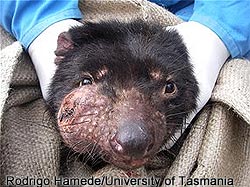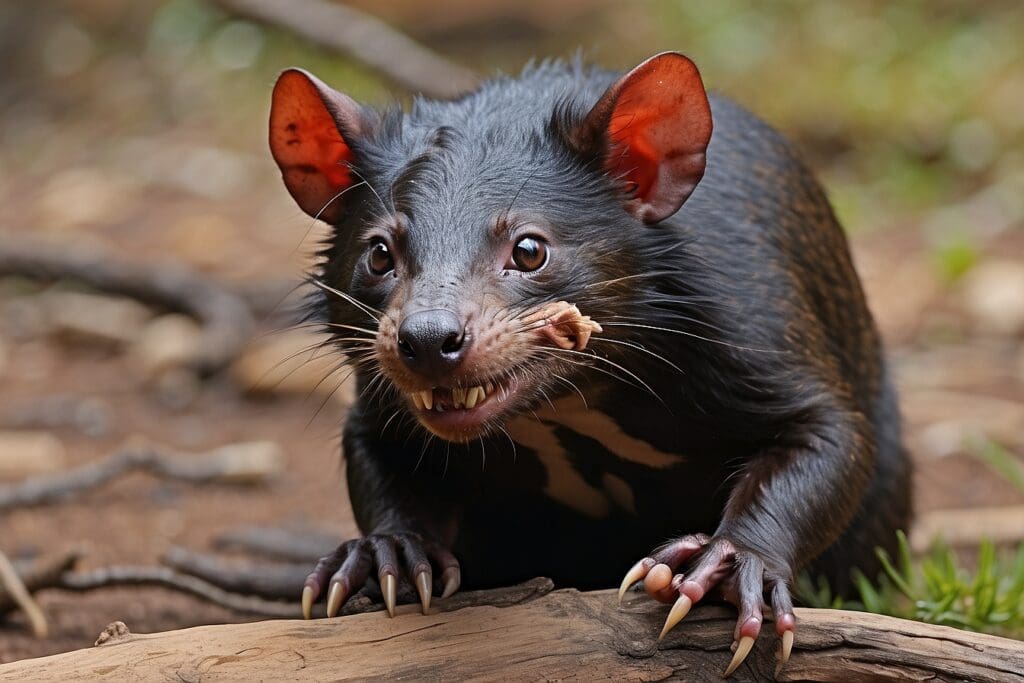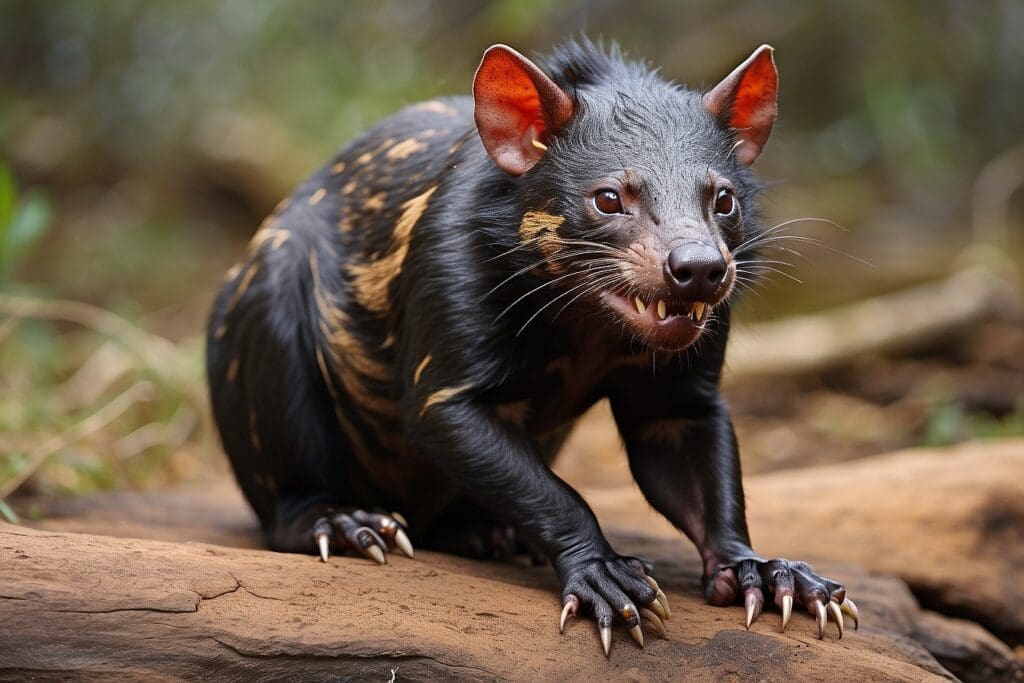Health is arguably the most important thing in life, probably for all living creatures and ecosystems. While we as humans get caught up in our own personal battles with diseases, we often forget that other animals also suffer from many of these same diseases. However, unlike us, animals in nature do not have the benefit of antibiotics and vaccines. One sad example of this is the plight of the Tasmanian devils, which have been suffering a parasitic cancer epidemic for the past few decades.
Devil Facial Tumor Disease
 iMenna Jones, a biologist at the University of Tasmania, has been studying the social structure of Tasmanian devils for decades. She tracks populations by trapping, observing, and releasing devils in the same locations year after year. In 1999, Jones first personally observed facial tumors on the devils; the tumors were first officially observed in 1996. Jones thought the tumors were the result of the devils being exposed to a toxin. Two years later, she trapped several more devils with facial tumors. One devil’s tumors covered his jaw, leaving him unable to eat. When she brought this devil to the veterinarian, the veterinarian stated that it was a type of cancer. This epidemic is now referred to as devil facial tumor disease (DFTD). As Jones continued to catch more and more devils with these tumors, it became clear that, scarily enough, this cancer had somehow become contagious.1
iMenna Jones, a biologist at the University of Tasmania, has been studying the social structure of Tasmanian devils for decades. She tracks populations by trapping, observing, and releasing devils in the same locations year after year. In 1999, Jones first personally observed facial tumors on the devils; the tumors were first officially observed in 1996. Jones thought the tumors were the result of the devils being exposed to a toxin. Two years later, she trapped several more devils with facial tumors. One devil’s tumors covered his jaw, leaving him unable to eat. When she brought this devil to the veterinarian, the veterinarian stated that it was a type of cancer. This epidemic is now referred to as devil facial tumor disease (DFTD). As Jones continued to catch more and more devils with these tumors, it became clear that, scarily enough, this cancer had somehow become contagious.1
The Tasmanian devil has always been a very important symbol in Tasmania. Thus, the Tasmanian government began quarantining healthy devils in zoos and on islands in the early 2000s in order to have a back-up population in case the wild population ever faced extinction from DFTD. It has been observed that devils usually die within six months of developing the tumors. Jones’ models predict that when the disease reaches a region, the devils go extinct there within 10 to 15 years. This is a rapid decline considering that Tasmanian devils are so populous in Tasmania that they are treated as pests, a situation akin to raccoons in the United States. If the devils go extinct, Tasmania’s biodiversity will surely decrease because the feral cat and fox populations will rapidly take over. Already, more mammals have gone extinct in Australia than on any other continent. The devil went extinct on mainland Australia about 5,000 years ago. However, Tasmania itself has only lost one mammal, the Tasmanian tiger.2
 ii
ii
Extinct Tasmanian tiger also known as the Tasmanian wolf
The DFTD epidemic is highly alarming. However, the silver lining is that DFTD is teaching scientists about the evolution of cancer. When Anne-Maree Pearse, a retired cancer researcher, looked at the cancer cells from different devils, she saw that they were all clones of one another. So unlike normal cancer cells, which are mutated cells, these cells were the surviving cells of a devil that had most likely been dead for a long time, making them parasitic cells.
The Tasmanian devils are typically inbred, meaning they have very little genetic diversity and therefore a very limited immune system defense. Pearse thought that it was possible that since all devils’ genetics are so similar, their immune systems were not recognizing these invasive cancer cells as a threat.3 When this theory turned out to be false, Pearse thought that maybe the tumors themselves were obscuring the immune system’s ability to detect the cancer cells. This is the case with another type of contagious cancer in dogs, canine transmissible venereal tumor (CTVT). Even if a vaccine is developed for DFTD, the vaccine will have to be given to every newborn devil indefinitely, which is not a realistic conservation plan. At this rate, DFTD will not continue to exist if it kills off all of the devils, which are its hosts. Therefore, it will likely evolve to become less deadly, like CTVT did. CTVT allows dogs to survive and breed so that there will always be new hosts for it to infect. Amazingly, the CTVT cell line is 11,000 years old, which is the oldest known cell line for mammals on Earth.4

Menna Jones has already noticed that DFTD tends to wipe out 90% of the devils in a particular area but not more than that. Jones’ researchers have also even noticed five devils that have had tumors that have eventually gotten smaller and gone away. Is it possible that these devils have genetic mutations that make them able to survive DFTD? Jones also hopes that since the devils on the western side of the country are slightly different genetically than the devils on the eastern side of the country (where DFTD began), the western devils will be able to develop a resistance over the years. Only time will tell, but Jones states that these latest discoveries have given her more hope for the devils than she had when the disease was initially discovered.5





